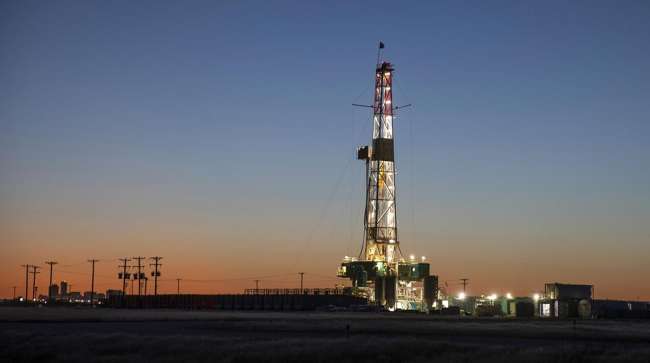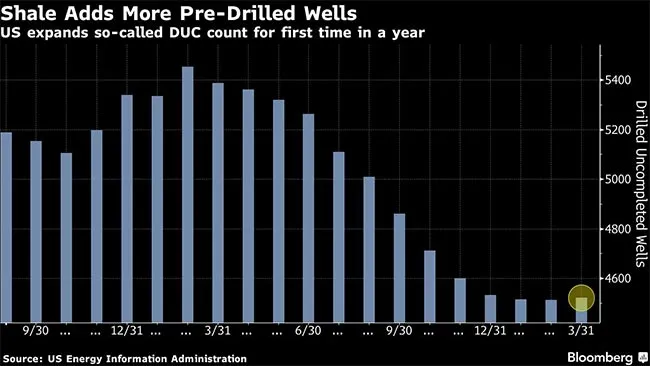Bloomberg News
Shale Oil ‘Fracklog’ Resumes Expansion After Yearlong Hiatus

[Stay on top of transportation news: Get TTNews in your inbox.]
Shale explorers are drilling wells faster than they’re fracking them, a strong signal that U.S. oil production growth is slowing.
Oil companies added to the number of drilled-but-uncompleted wells, known as the fracklog, last month for the first time in more than a year, according to a report from the Energy Information Administration on April 15.
The tally is a key indicator of near-term crude flows from U.S. shale fields because fracking is one of the final steps in the process of bringing new wells online.
Stockpiling unfracked wells allows drillers to time production for periods of higher prices or easier access to pipelines and other infrastructure.

As of the end of March, the fracklog rose by nine to 4,522, according to the government’s assessment of the seven most-important US shale regions.
Overall, U.S. shale-oil output is expected to be steady at about 9.86 million barrels per day in May, below the record 10 million seen in December, according to the report. Output from the Permian Basin hasn’t completely returned to the December high and is expected to be roughly 6.17 million a day next month.
The data will reassure oil bulls who’ve been watching U.S. output closely after efficiency gains helped propel a surprise production boom in 2023. While the number of U.S. rigs drilling for crude has largely remained flat this year, explorers had been eroding the fracklog every month since March 2023, contributing to the unexpected jump in output.
Want more news? Listen to today's daily briefing below or go here for more info:



